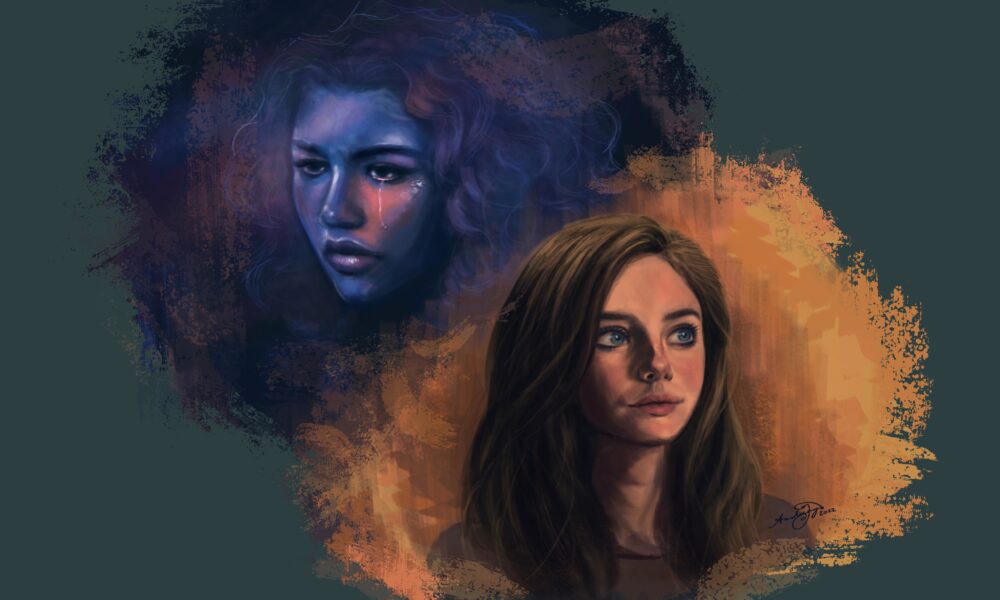Content Warning: Mentions of drug addiction and sexual violence.
Even for university students, TV shows that centre teenage characters in and around high school have widespread appeal. Skins, which premiered in 2007, and Euphoria, which premiered in 2019, stand apart from other shows for their brutal depictions of partying, drug use, sex, and mental illness. Although only the latter is still airing, The McGill Tribune weighs how each show marks the dark teen drama genre.
Skins: E4’s drama that transformed teen TV for good — Signy Harnad
In 2007, audiences were introduced to a group of teenagers from Bristol who got high on drugs, had promiscuous sex, and swore like sailors. The world would never be the same.
The British E4 network commissioned this television series, Skins, as their flagship show. Penned by father-and-son writing duo Bryan Elsley and Jamie Brittain, it was set to be a “show about teenagers, but one that actually means something.” The series zeroes in on a group of mates in Bristol who sleep with each other, attend raucous house parties, and drink to excess. More than 10 years later, it remains an authentic, wickedly funny, and indulgently offensive slice of late 2000s British teenage life.
For six seasons—and one final run we will not speak of—Skins veered from nightclub escapades to existential reflections on mortality, mental health issues, and smoking more “spliffs” than you know you ought to. It treated viewers to a gold rush of generation-defining characters, ranging from the rebellious to the quirky—I remember having a soft spot for Mike Bailey’s endearing Sid.
And then there was the way the show was able to overhaul its image every two years by culling the entire cast across three generations of characters. This not only enabled viewers to meet a brand new group of teens every two seasons, but also served as a glaring reminder that no matter how immutable this time in our lives may seem, it does end—we grow up.
Perhaps what was most groundbreaking about Skins, though, was that the personal struggles of the characters were not simply the glossy dramas of adults transplanted onto teenagers—programming that dominated TV schedules in the early 2000s (think Gossip Girl, The O.C., and One Tree Hill). The stories were more raw, honest, and relatable.
Despite all its ups and downs and occasional missteps, Skins became symptomatic of a pre-Instagram, post-indie era, providing an intimate snapshot of teen life in all its idealistic glory. Granted, during certain over-the-top moments, such as when fan-favourite Freddie is clubbed to death by a rogue psychiatrist, Skins really takes the I don’t remember that happening at my high school cake. Nevertheless, the show was never meant to depict anything but a state of sustained mayhem, much like adolescence itself.
Euphoria: HBO’s teen noir that 2022 needs — Paulina Kasak
HBO’s Euphoria first premiered in June 2019. The series is an adaptation of an Israeli show of the same name, which first aired in 2012. This epic series continues to make a mark on teen pop culture, simultaneously mesmerizing and utterly shocking the viewer through scenes of drug abuse, sex, drinking, bullying, and more. It is this alluring taboo content that paints the perfect picture of chaotic and misguided teenhood.
The series’ title best encapsulates the internal goals of the show, which portrays the darkest moments, thoughts, and actions of a group of high school teens as they try to find joy by any means possible. Euphoria’s teenagers go to extreme lengths in search of what they hope will make them feel alive. The second season, which premiered on Jan. 9, focusses on Rue (Zendaya), who continues to struggle with drug addiction, while other beloved characters such as Cassie (Sydney Sweeney) and Maddy (Alexa Demie) deal with the vicious repercussions of being constantly objectified by almost everyone around them. Though only two episodes have been released, season two seems to surpass the shock value of its predecessor in the best way possible.
There is something daring about placing teens at the centre of darkness and violence. Although it isn’t the first show to do this, Euphoria captures dark teen drama in a way that others do not—it inspires empathy for its characters, despite each of their fatal flaws. The viewer is often caught between the desire to watch on and feelings of overwhelming discomfort in watching teens experience such hardship. As appalling as Euphoria’s characters and their actions can get, the series provides realistic commentary on the realities of contemporary American teenagers. It is the undeniable plausibility of these violent mental and physical experiences that make the series what it is.
The series also offers a captivating take on the rather melancholic lives of this group of teens, destigmatizing topics such as mental illness and abusive relationships, rather than romanticizing them as other TV predecessors have done. It is the series’ inclusivity and bravery, in all respects, that marks it as a must-watch unique to contemporary culture.









